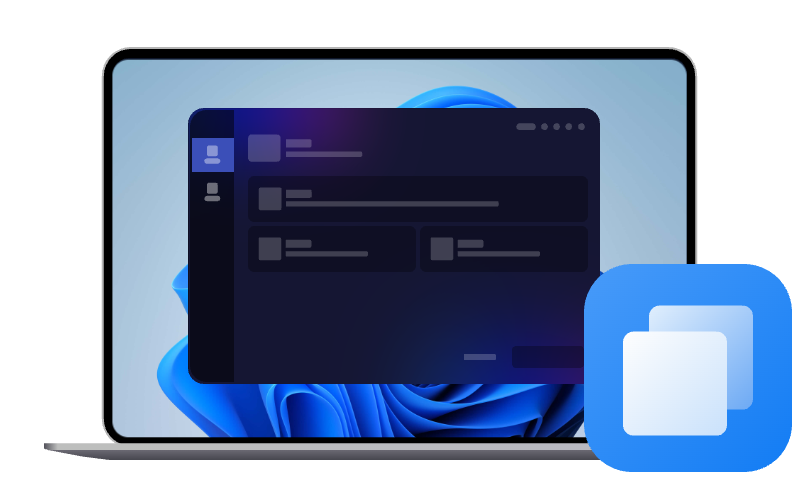Clone Windows Server 2012(R2) to New Hardware [Two Ways]
You can easily clone Windows Server 2012(R2) to new hardware using WSB and a powerful cloning software - AOMEI Cloner, with step-by-step instructions. Scroll down to learn more!
Your aging Windows Server 2012(R2) requires new hardware, but “cloning” can mean two different things. Are you upgrading just the hard drive, or migrating to a completely new machine?
No worries - this guide will outline two best practices: the built-in WSB tool is ideal for drive-only upgrade, and powerful server cloning software supports both scenarios. Let's dive in!
#1: Clone Windows Server 2012(R2) to New Hardware [Easier & More Powerful]
Dedicated Cloning Software for “Full System” Replacement
Cloning software creates ready-to-go exact copies of a server and can handle the driver incompatibility issue between different hardware. It’s ideal for the following scenarios:
- Move from Dell to HP (or any brand) or to different models.
- Old hardware to new (with different chipsets)
- Replace the machine and drives together
- Ensure it actually boots on new hardware (with driver compatibility issues).
Direct Clone Windows Server 2012(R2) to New Hardware
💡Before cloning Windows Server 2012(R2):
- Prepare a screwdriver to disconnect or reinstall the drive.
- Check if the target drive is larger than the used space of the old drive in Windows Server 2012(R2).
- Be sure the new hardware has the same boot mode (BIOS/UEFI). If not, you need to change it.
- Free download server cloning software - AOMEI Cloner.

- 3 Cloning Solutions: System Clone, Disk Clone, Partition Clone.
- Full Migration: include all data, OS, and boot-related partitions, making the cloned drive bootable.
- Intelligent Clone: Clone only used sectors, skipping bad sectors for faster, smoother cloning.
- SSD Alignment: Optimize SSD drives' performance and longevity.
- Disk Type & OS Compatibility: Support different disk types, e.g., HDDs/SSDs, MBR/GPT, SATA/M.2/NVMe/PCIe, as well as Windows Server 2008, 2012, 2016, 2019, 2022, 2025, etc.
Step 1. Connect the new HDD/SSD to the old Windows Server 2012(R2) and be sure it’s recognized. Then, open AOMEI Cloner and click Clone > Disk Clone.
Step 2. Select the current system drive and the new HDD/SSD, respectively. Click Next after each selection.
Step 3 (IMPORTANT). It will auto-resize the drive to full capacity (if it’s larger). You can click Edit Partitions to confirm this, and optionally, convert MBR to GPT, or GPT to MBR. Also, it’s suggested to enable SSD Alignment for best performance. At last, click Start Clone to clone Windows Server 2012 (R2) to new HDD/SSD.
⚠️Note: Sector-by-Sector Clone is a cloning mode that can clone all sectors of a drive and takes longer. Just leave it unchecked unless the drive is BitLocker-encrypted.
Step 4. After cloning, disconnect the drive and reinstall it in the new machine. Be sure the drive is tightly secured.
Step 5. Power on the new hardware, and the cloning software will automatically handle driver compatibility during the first startup. Then, it will navigate to a Windows desktop, identical to the old server.
Why Cloning Software Wins for New Hardware?
- Automatic driver management: Intelligently handles different storage controllers, chipsets, and network adapters.
- Dissimilar hardware compatibility: Prevents boot blue screens (STOP 0x0000007B errors) common with hardware changes.
- Superior Efficiency: Typically 2-3 times faster than backup and restore methods, with support for universal restore.
- User-Friendly Interface: Guided wizards simplify complex system migration tasks.
#2: Clone Windows Server 2012(R2) to New Hardware using WSB [Drive-Only Upgrade]
Not a True Cloning Tool, But Still Useful
While WSB is not a dedicated cloning software, it can effectively handle several OS migration scenarios through its backup and restore features.
- Perfect for replacing an old HDD with a new, faster SSD, or larger drive when keeping the exact same hardware.
- Simple system state (e.g., system configurations, roles, and settings) preservation.
- Emergency disaster recovery.
- Temporary testing environments with hardware consistency.
- Zero-cost alternative for cloning tools.
Backup and Restore Windows Server 2012 (R2) to HDD/SSD
Step 1. On the Windows Server 2012 (R2), open Server Manager and manually install Windows Server Backup. Then, Open Windows Server Backup, and click Backup Once or Backup Schedule to get started. Be sure to select "Full server" in Select Backup Configuration, or select "Customize" -> "Bare metal recovery".
Step 2. Once the backup is complete, connect the installation disc or recovery drive to the machine and boot from it. Then, click Next > Repair your computer.
Step 3. Select Troubleshoot >Advanced Options >System Image Recovery. Follow the on-screen instructions to select a system image and restore to new hard drive or SSD.
After the restoration process is complete, the new HDD/SSD should have a replica of the source server, including all data, settings, and applications. You can try to perform a first boot from it.
Pros and Cons of Using WSB
Advantages:
✅ Completely free - no additional software costs
✅ Built into Windows Server 2012
✅ Reliable for same/similar hardware
Disadvantages:
❌ Not designed for dissimilar hardware (different motherboards/chipsets)
❌ Restoration process can be time-consuming
❌ Limited flexibility compared to dedicated cloning tools
Conclusion
The key to cloning Windows Server 2012(R2) to new hardware lies in matching the tool that aligns with your specific hardware requirements and operational needs.
For straightforward drive replacements within the same hardware, Windows Server Backup provides a capable and cost-free solution. However, for true hardware migration, investing in specialized cloning tools is essential for a smooth and successful transition.

